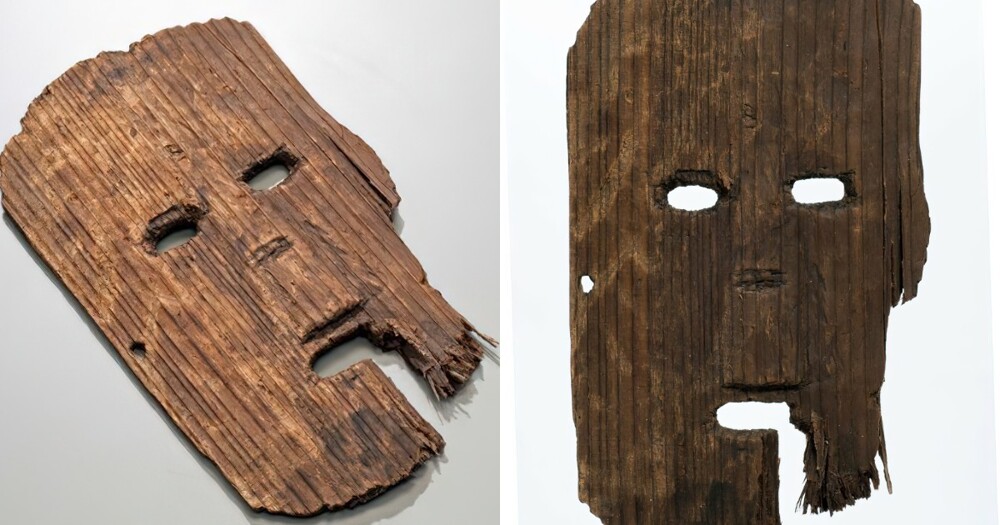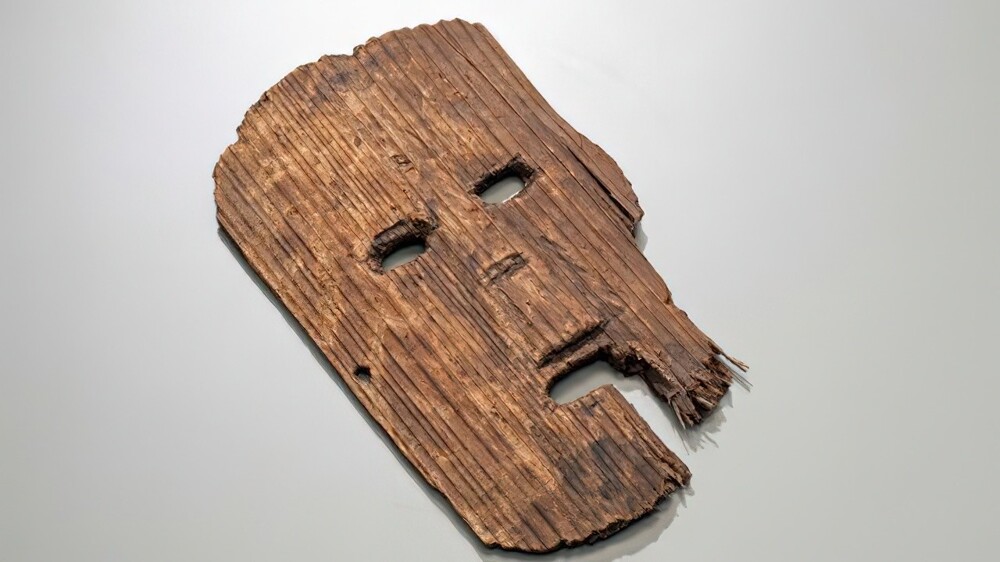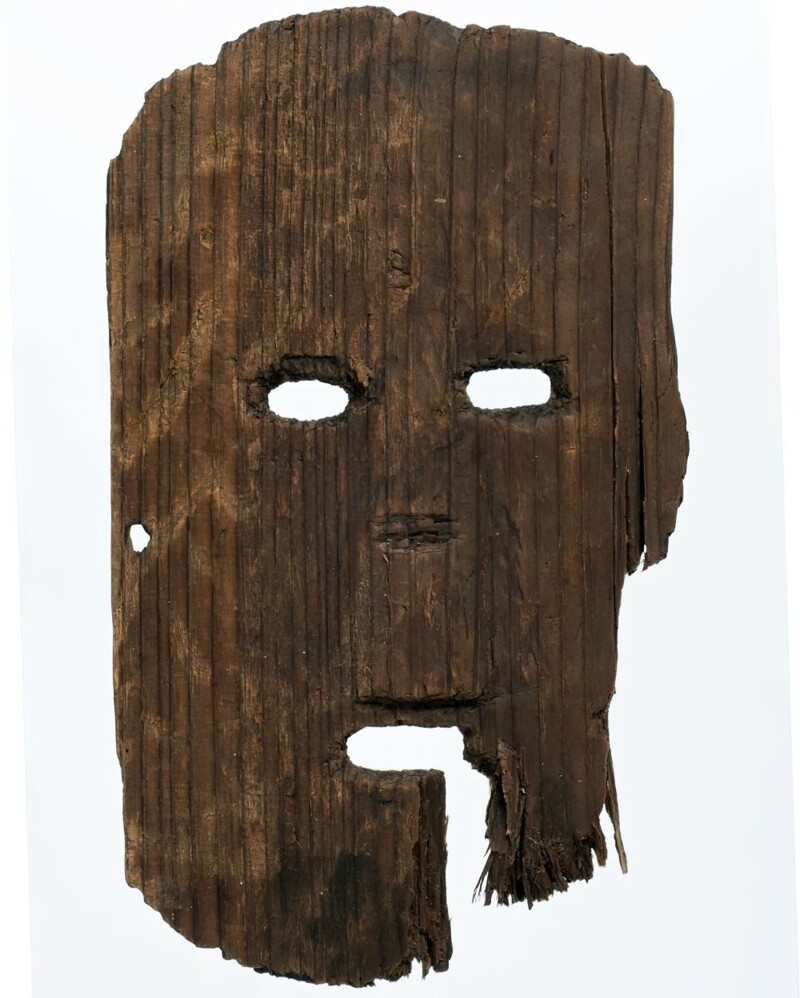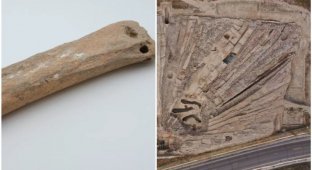An 1800-year-old ritual mask found in Japan (3 photos)
Archaeologists have discovered a wooden mask from the beginning of the III century in the ruins Nishi-Iwata in Osaka Prefecture, Japan. According to the researchers, these masks could be used in ceremonial rituals during important agricultural festivals around 1800 years ago, during the Yayoi era. 
The discovery was announced by the Osaka Cultural Heritage Center on April 24.
So far, only two wooden masks of this period. The mask is carved from cedar, measures about 30 cm high and 18 cm wide, it has holes for the eyes and mouth, as well as small holes on the sides - apparently for ties.
The item was found in flood sediments at a depth of 2.9 meters next to a fragment of a wooden bucket for water and a charred a wooden tool that looks like a hoe. Experts believe that these three subjects could well be presented at agricultural festivals. 
In the Yayoi era (according to the archaeological periodization of the history of countries West, this era corresponds to the Bronze and Iron Ages) the Japanese are already moved to a settled agricultural society and used methods farming brought from Korea in the Kyushu region.
According to Kaoru Terasawa, director of the Research Makimukugaku Center in Sakurai City in Nara Prefecture, the mask is probably were exclusively a festive ritual attribute, since it too heavy to wear. 
“I believe that the mask represented the “spirit of the head”, who was believed to be a god in the form of a man and personified power Okimi,” added Kaoru Terasawa.
Okimi is the title of the ruler of the Yamato Kingdom, political an alliance of powerful families that ruled from the 3rd to the 7th centuries in the area present-day Nara Prefecture.























